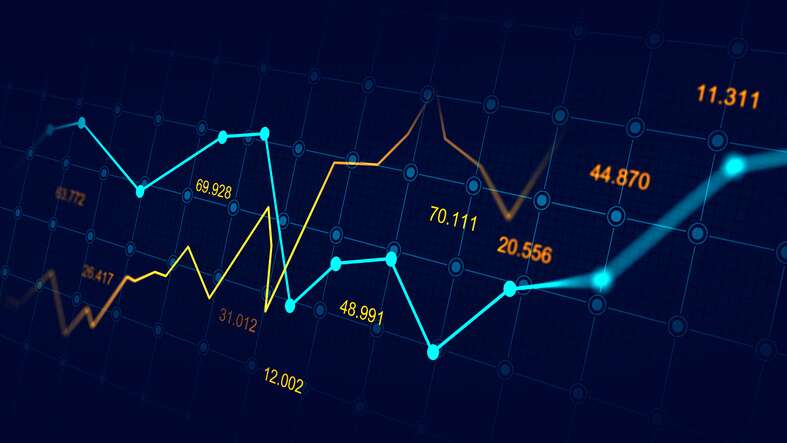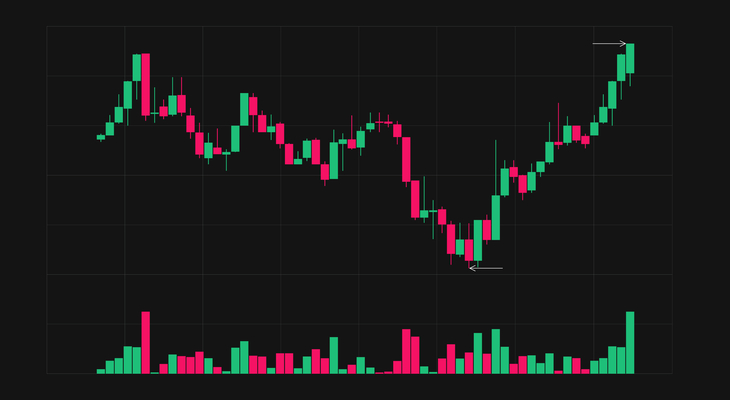Commodity trading can be a daunting prospect for the novice trader. But imagine the thrill of navigating the markets with an experienced captain at your side, the sea of commodities lit up in a dazzling array of colors, and the freedom to sail through the waves of opportunity and success.
Mastering the art of commodity trading can open a new world of possibilities, and this guide will teach you the basics of navigating the markets. Here, you will learn about the different types of commodities, key points to consider, and trading tips to help you succeed.
So set sail and join us on a journey to unlock the secrets of commodity trading.
Key Takeaways
- Commodity trading involves buying and selling of real assets in measurable physical quantities.
- There are various types of commodities including agricultural, metal, livestock, and energy commodities.
- Crude oil prices are highly volatile and influenced by changing demand and political events.
- Trading commodities as CFDs is ideal for beginners, and it is important to choose a trading platform that offers various commodity trading instruments.
What is it?
Commodity trading is the buying and selling of commodities, such as grains, oilseeds, dairy products, and fertilizers, which are real assets available in measurable physical quantities, either through physical trading or through derivatives trading.
It is important for a beginner trader to understand the pros and cons of commodity trading in order to make the right decisions.
Physical trading involves exchanging the commodities based on spot prices, while derivatives trading involves buying and selling swaps, futures, forwards, and options.
Futures contracts have set delivery dates and expire after that date, while undated commodities are contracts without expiry dates, such as trading commodity CFDs.
It is also important to choose the right commodities for trading, as different commodities have different levels of liquidity and volatility.
For instance, crude oil prices are highly volatile and influenced by changing demand and political events, while natural gas futures rank third as the most traded physical commodity futures by volume.
It is thus essential for a beginner trader to learn more about the commodities markets and what drives price movements in order to successfully trade in commodities.
Types of Commodities
Various commodities are available for trading, such as agricultural products, metal commodities, livestock commodities, and energy commodities. Factors influencing commodity prices include supply and demand, political and economic events, and natural disasters.
Speculation plays an important role in the commodity markets. Speculators and traders aim to buy and sell commodities for profit, while hedgers buy futures contracts to offset the risk of price changes. Different commodity markets have different risk profiles, so it is important for traders to be aware of the factors that influence prices in the commodity markets.
Popular commodities include crude oil, coffee, natural gas, gold, and silver. These can be traded through futures contracts, forwards, swaps, options, and ETFs. Leverage can help traders to open larger positions, but it is important to understand the risks associated with leverage.
It is also important to understand the different types of commodities and how they are traded. Commodity trading requires knowledge and experience, and it is important to have a risk management strategy in place.
Key Points
It is important to recognize key points in the commodity markets, such as the highly volatile nature of crude oil prices and their influence from changing demand and political events, as well as the distinction between Brent Crude Oil and WTI Crude Oil which act as a leading indicator of global oil prices.
Commodity trading offers several benefits for beginners, such as:
- Leverage to open larger positions
- Access to automated expert advisors
- Educational materials and training simulators
- Minimized slippage
Risk management is also essential when trading commodities. Traders should set up stop-loss orders, trailing stops, and maintain a risk vs reward ratio in order to manage their exposure and limit losses.
It is also important to be aware of commodity futures contracts delivery dates and expiry dates, as well as undated commodities such as CFDs.
With the right knowledge and tools, trading commodities can be a lucrative and rewarding experience.
Trading Tips
| In order to gain an edge in the markets, traders should be aware of tips and strategies for successful commodity trading. | Trading Strategies | Risk Management |
|---|---|---|
| Analyze the market | Set up stop-loss orders | Monitor news releases and economic health |
| Leverage | Trailing stops | Consider a commodity trading advisor |
| Use momentum indicators | Risk vs reward ratio | Choose a trusted broker |
Commodity trading requires careful analysis and risk management. Leverage allows traders to open larger positions, but it should be used judiciously. Traders can use technical indicators such as momentum indicators and moving averages, as well as fundamental analysis, to identify trading opportunities. Risk management is essential, and can be achieved by setting up stop-loss orders, trailing stops, and maintaining a risk vs reward ratio. A commodity trading advisor can provide trading signals. Lastly, choosing a reliable and trusted broker with regulatory compliance and safeguards is important.
Frequently Asked Questions
What is the difference between physical and derivatives trading?
Have you ever wondered what the difference is between physical and derivatives trading?
Physical trading involves exchanging actual commodities based on spot prices, while derivatives trading is the buying and selling of swaps, futures, forwards and options.
Price discovery is the primary goal of physical trading, while hedging strategies are commonly used in derivatives trading.
Derivatives trading allows traders to speculate on the price movements of commodities, without having to buy or sell the physical asset. It also provides traders with greater flexibility, allowing them to adjust their exposure in the market as they deem fit.
Physical trading offers greater security, as the physical asset is exchanged for cash at the spot price.
What are the best commodities to trade?
The best commodities to trade depend on the market conditions and the trader’s goals. Popular commodities include gold, silver, and crude oil, due to their high liquidity and volatility. Supply and demand dynamics, market volatility, and geopolitical events can all affect the price of these commodities, making them attractive for experienced traders.
Trading these commodities through CFDs can be a great way to take advantage of price movements while mitigating risk. Leverage allows traders to open larger positions with a smaller account balance. However, it is important to remember to maintain a risk-reward ratio and stick to the trading plan.
What is the difference between futures and forwards?
Trading commodities can be intimidating for the uninitiated, but with a little knowledge of futures and forwards, it can be a lucrative endeavor.
Futures and forwards are both forms of margin trading that allow traders to leverage their positions and take advantage of price movements.
The key difference is that futures contracts are standardized and traded on an exchange, while forwards are privately negotiated contracts between two parties.
Futures offer greater liquidity and more predictable risk, while forwards can be customized to fit the needs of the parties involved.
With the right understanding and approach, traders can use either form of margin trading to their advantage.
How do I open a commodity trading account?
Opening a commodity trading account requires choosing a reliable broker that offers access to the markets you wish to trade. It is important to research the broker’s regulatory compliance and safeguard measures for your funds.
You will also need to determine your trading strategies, such as whether to use futures, forwards, swaps, or options. Leverage can increase your exposure and profitability, but you should consider the risks associated with it.
A demo account can be used to test out your strategies and get accustomed to the markets without risking any real money.
What is the best way to manage risk when trading commodities?
Risk management is essential when trading commodities. To mitigate risk, traders can employ hedging strategies such as using stop-loss orders to limit losses. These orders set a maximum loss threshold, allowing traders to exit a trade once the price reaches a certain level.
They can also use a risk/reward ratio to determine the amount of risk they are willing to take on a given trade. Additionally, diversifying a portfolio with commodities can help to take advantage of correlations and potential profits.
Ultimately, risk management is key to successful commodity trading.
Conclusion
Commodity trading is a complex field that requires a deep understanding of market dynamics, trading instruments, and risk management.
With educational materials, automated trading strategies, and leverage, traders can use FXTM to start their journey to mastering the art of commodity trading.
The key is to remain informed, use stop losses, and use leverage wisely to protect capital.
As the old adage goes, “Knowledge is power”; with the right knowledge and the right tools, traders can become successful in the highly competitive and rewarding world of commodity trading.











